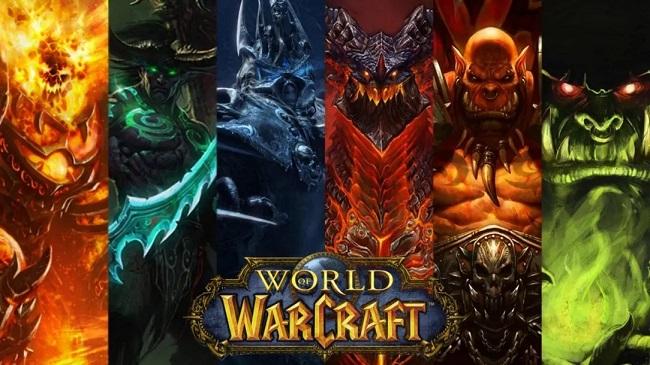The World of Warcraft (WoW) universe has been ever-evolving since its release in 2004. Blizzard Entertainment, the game’s developer, has consistently expanded the world of Azeroth through numerous expansion packs.
In this article, we’ll delve into WoW’s expansive history, exploring each expansion in chronological order, offering an outlook on the next expansion, and a brief on expansions ranked by player preference. We will also provide an overview of the game’s timeline and the level ranges for each expansion.

Contents
The Burning Crusade (2007)
“The Burning Crusade,” the first expansion for WoW, was released in 2007. It introduced the Outland, a new continent teeming with demonic forces and alien flora and fauna. This expansion also introduced two new playable races: the Blood Elves for the Horde and the Draenei for the Alliance.
Wrath of the Lich King (2008)
In 2008, Blizzard released the second expansion, “Wrath of the Lich King”. This expansion unveiled the icy continent of Northrend, where the Lich King and his undead army, the Scourge, dwelled. This expansion is often praised for its engaging storyline and memorable raid encounters.
Cataclysm (2010)
“Cataclysm,” released in 2010, drastically reshaped Azeroth as the malevolent dragon Deathwing broke free from his underground prison, causing widespread devastation. This expansion introduced two new playable races, the Worgen for the Alliance and Goblins for the Horde.
Mists of Pandaria (2012)
“Mists of Pandaria,” launched in 2012, introduced players to the serene yet fraught land of Pandaria. This expansion brought a new playable race, the Pandaren, who could choose to align with either the Horde or the Alliance. It also introduced a new class, the Monk.
Warlords of Draenor (2014)
Released in 2014, “Warlords of Draenor” took players to an alternate universe on the orc homeworld of Draenor. This expansion also introduced Garrisons, player-owned bases that could be customized and upgraded.
Legion (2016)
In “Legion”, released in 2016, the demonic Burning Legion launched a massive invasion on Azeroth. Players ventured to the Broken Isles to combat this threat. This expansion introduced a new class, the Demon Hunter, and Artifact weapons that players could level up and customize.
Battle for Azeroth (2018)
“Battle for Azeroth,” launched in 2018, reignited the war between the Horde and Alliance. This expansion introduced two new continents, Kul Tiras and Zandalar, and new playable allied races for each faction.
The Next Expansion
At the time of writing, Blizzard has not officially announced the next WoW expansion. However, based on Blizzard’s release pattern, we can expect more thrilling storylines, new areas to explore, and potentially new races or classes.
Expansions Ranked and Timeline
Ranking the expansions is subjective as each player might have a different favorite based on personal experiences. However, “Wrath of the Lich King” and “Legion” often rank high due to their immersive storylines and satisfying gameplay.
The timeline of WoW is complex, given the game’s rich lore. In terms of real-world releases, the timeline is straightforward, with the base game in 2004 and subsequent expansions approximately every two years.
Expansions by Level
As of the Shadowlands pre-patch, players can choose to level their characters in any expansion’s content from level 10 to 50 before moving onto the current expansion content. This change allows players to experience an expansion’s complete storyline while leveling a single character.
In conclusion
The World of Warcraft universe is an expansive and rich tapestry of storylines and characters that has grown with each expansion.
From the demonic forces of the Burning Crusade to the epic faction war in Battle for Azeroth, each chapter in Azeroth’s history offers unique adventures and experiences for players.
We look forward to the exciting new stories and challenges that future expansions will undoubtedly bring.






![Err_Connection_Reset Error in Chrome [RESOLVED] Fix Err_Connection_Reset Error in Google Chrome](https://howandwow.info/wp-content/uploads/2019/09/Fix-Err_Connection_Reset-Error-in-Google-Chrome.jpg)
![DNS_Probe_Finished_No_Internet Error [RESOLVED] Fix DNS_Probe_Finished_No_Internet Error](https://howandwow.info/wp-content/uploads/2019/09/Fix-DNS_Probe_Finished_No_Internet-Error.jpg)
![Err_Cache_Miss in Google Chrome Error [RESOLVED] Err_Cache_Miss in Google Chrome Error](https://howandwow.info/wp-content/uploads/2019/08/How-to-Fix-Confirm-Form-Resubmission-Error.jpg)







![Steam Missing File Privileges Error [RESOLVED] How to Fix Steam Missing File Privileges](https://howandwow.info/wp-content/uploads/2020/07/How-to-Fix-Steam-Missing-File-Privileges-Error-100x70.jpg)




![SIM Not Provisioned MM#2 Error [RESOLVED] SIM Not Provisioned MM#2](https://howandwow.info/wp-content/uploads/2020/03/SIM-Not-Provisioned-MM2.jpg)






